
Table Of Contents
- Optimizing Your Site For Core Web Vitals: Overview
- What Are Basically Core Web Vitals?
- Why Should You Optimize Your Site for Core Web Vitals?
- Best Tips To Optimize Your Site Core Web Vitals
- 1. Largest Contentful Paint (LCP) Analysis and Optimization
- 2. First Input Delay (FID) Analysis and Optimization
- 3. Cumulative Layout Shift (CLS) Analysis and Optimization
- Other Web Vitals Metrics
- 1. FCP – First Contentful Paint
- 2. TTFB – Time To First Byte
- Wrapping Up The Tips To Optimize Your Website For Core Web Vitals
Are you worried because your website is taking time to load fully? Do you want to improve the user experience of your business site?
If so, Core Web Vitals could be one part you can call responsible for. This blog post will explain how to optimize your site for Core Web Vitals in easy steps.
Core Web Vitals are now a Google ranking factor, and most SEO experts focus on optimizing their sites for them.
Every time Google rolls an update, people face an increase or decrease in their overall ranking. Those with good metrics of Web Vitals sustain position and retain their visitors.
So, how can one follow the best practices to avoid any harm to their website ranking? The short answer is to improve your “Core Web Vitals” metrics!
Optimizing Your Site For Core Web Vitals: Overview
Core Web Vitals are now essential factors and have become integral parts of search engine optimization (SEO). It’s necessary to optimize these metrics regularly by giving them more time. It’ll help improve the user experience and ranking of your website.
We all believe that better content ranks better on search engines. But SEOs know what other things can effectively bring better content to the top and then the first position. So, to explain this factor to maintain your web position, we’re going to discuss it further.
What Are Basically Core Web Vitals?
Core Web Vitals are some specific metrics for measuring the overall user experience of your business site page(s). They have three different scores showing page loading time, design stability, speed, and user interaction.

If we look at them a little deeper, they include:
Largest Contentful Paint (LCP)
LCP, as the name indicates, measures how your content performs on the page. It could be text, images, or videos; the time they take to load. This score is relevant to the ranking of your site.
First Input Delay (FID)
FID is the first interaction of the user and measures the responsiveness of your website’s pages. This score also counts the browser’s speed the user is browsing.
Cumulative Layout Shift (CLS)
CLS helps know what is necessary for the user — so more relevant to the user experience. You’ll get a low CLS score if the design has more stuff than content and the page is unstable.
We’re mentioning it again; you must optimize these three metrics to make your site perform at its best. Google uses all these scores to rank your web pages. Before explaining how to improve each of them, you should know why they are so valued.
Why Should You Optimize Your Site for Core Web Vitals?
Getting a good score on these criteria will impact the overall performance of your website. If you have hired an SEO for improving your Core Web Vitals score, your time and investment are worth each penny. You’ll enjoy the following benefits once you attain the best possible results.
1. Increased Website Ranking
In June 2021, Core Web Vitals became crucial ranking factors in Google’s core update. So, it’s vital to focus on these metrics and improve them to rank your website. For this purpose, your site must load faster, be interactive, and be stable on all devices, and its ranking will increase.
2. Lesser Bounce Rate
Core Web Vitals have a direct role in increasing your website’s bounce rate. Any user landing on your professional site will not wait for more than 3 seconds for the content to load. It can lead to a rise in bounce rate. So, having a good score on Core Web Vitals will help decrease your bounce rate.
3. Increased Conversion Rate
Conversion rate mainly depends on visitors or traffic of your website, those who stay. If your web asset holds a good score of Core Web Vitals, you’ll get plenty of traffic. As a result, your overall conversion rate will increase. Otherwise, you can face a decrease in conversion rate.
Best Tips To Optimize Your Site Core Web Vitals
Now, it’s time to learn how to optimize your site for Core Web Vitals tests. As there are three different metrics, we’ll explain each one separately. We’ll let you know how to analyze them, the reasons for bad scores, and how you can improve them.
1. Largest Contentful Paint (LCP) Analysis and Optimization
LCP focuses on only one element; your site load time. If users do not see what they are looking for within a second, they will leave the site. So, all the content on your website page must load at once and fast.
Analyze LCP
To analyze LCP, you can use some methods and especially tools, which are as under:
- Use DevTools Lighthouse of Chrome or any Chromium-based browser.
- For non-Chromium-based browsers, use PageSpeed Insights or the web.dev tool.
- Use Web Vitals extension; it’s a very effective tool with score indicators.
- You can go with the web-vitals JavaScript library if you can code.
- Take help from Google’s Search Console’s Core Web Vitals feature.
Bad LCP: Why
Before optimizing LCP, it’s necessary to know the reasons behind it. So, here are a few causes your website has a low LCP score.
- The server responds slowly to shared hosting services, and page rendering takes time.
- Render-blocking resources on HTML can prevent pages from loading quickly.
- Large unoptimized images and videos can consume more bandwidth and render slowly.
- Content loading and display issues are present on the client-side rather than the server.
Here is an example for bad LCP!

Optimize LCP
Once you understand the causes that result in poor LCP, it’s easy to optimize each of them. So, let’s move ahead and check how you can do this.
Use A Better Hosting Service
After analyzing your money-making site, if you have found that your server responds slowly, it’s time to upgrade hosting. Shared hosting can result in many other issues, like your website running into downtime. So, using better hosting such as Cloudways can eliminate this problem.
Fix Render-Blocking Resources
Render-blocking resources such as JavaScript and CSS have a noticeable impact on page loading. If you have encountered a render-blocking problem, you can use plugins like WP Rocket and Autoptimize to solve it. After performing optimization steps, analyze your site again.
Optimize Your Images
Yes, this is why your website’s page takes time to load. For eliminating this problem, reduce image dimensions and keep it in the proper format. The best practice is to select a specific size and file type and upload each image in fully optimized form.
Well! You might be interested in checking our LCP score! Here it is!
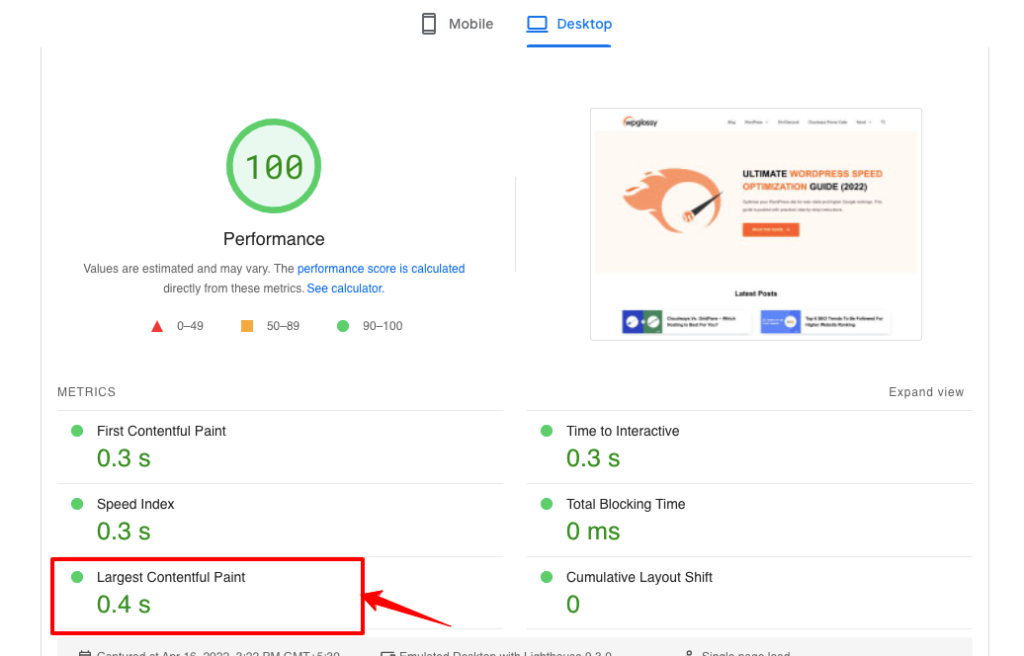
2. First Input Delay (FID) Analysis and Optimization
FID focuses on the usability of your site, whether the user can interact with your page or not. If a user clicks or taps a link and does not open it right away, it means a slow response. So, it would help if you made your other content on website pages respond as quickly as possible.
Analyze FID
So, to analyze if there is any issue with FID, you can go through the following steps:
- Use WebPageTest to find codes blocking the Main Thread when running JavaScript.
- Find Long Tasks, including URLs, through the “Bottom-Up” tab in the Inspect Element.
- Take help from DevTools or PageSpeed Insights to find Total Blocking Time (TBT).
- Use the Chrome Web Vitals extension to know the interaction when a user clicks or scrolls.
- Chrome UX Report helps you find how URLs are performing on different devices.
Bad FID: Why
With poor FID, you can lose most of your new visiting users. When you get a low FID score, the possible reason could be any of these given below:
- JavaScript results in Long Tasks, making your website less responsive.
- Render-blocking resources, CSS and JavaScript, cause delays in page loading.
- Starting large JavaScripts right after loading a page can delay rendering.
- Using third-party or poorly optimized JavaScripts can lead to render-blocking.
Optimize FID
Now, when you find the cause of a low FID score, you can optimize it quickly. So, here are the steps you should follow to do this:
Break Long-Running JavaScript Tasks
Long-running JavaScript tasks are the primary cause of low FID scores; you should optimize them first into shorter ones. This will make your website more responsive and improve user interactions. As a result, its overall functionality will improve drastically.
Work With JavaScript And CSS Files
Make sure that your site interface gets used in CSS before JavaScript using advanced strategies. They include progressive enhancement allowing all web browsers to access the content and functions. Here, your website gets an improved layout offered by CSS.
Minimize JavaScript, Optimize CSS
You can remove inactive and minimize third-party JavaScript, saving a lot of space. It would also help you make your CSS and JavaScript files smaller by linking them. CSS, like JavaScript, can cause problems and thus, needs to be optimized.
We have executed all the steps listed; you may check our FID score!
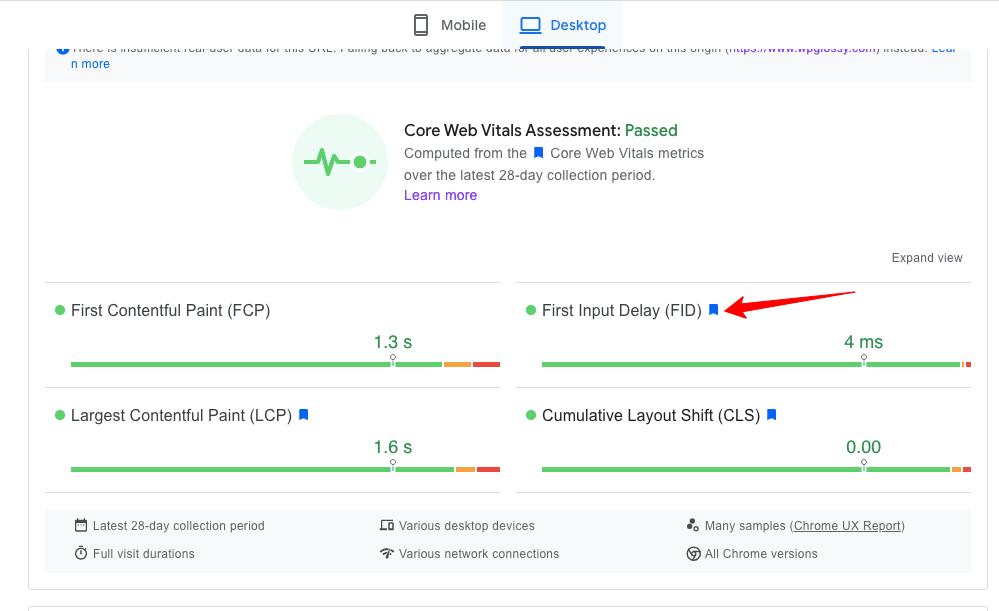
3. Cumulative Layout Shift (CLS) Analysis and Optimization
CLS focuses primarily on your website’s page stability. It looks at your page content and design layout if things move during loading or not. This problem bothers the readers when the text slides off the page. So, you should keep it optimized for the sake of user experience.
Analyze CLS
It’s easy to analyze CLS as it is more common and experienced quickly. You can use the following tools or methods to analyze CLS:
- Use DevTools Lighthouse to find all the issues impacting your layout shift.
- For performing a live performance test, you can use PageSpeed Insights.
- Use web.dev tool for analyzing CLS in real-time on desktop devices.
- Layout Shift GIF Generator can help in finding layout shifts showing the areas.
Bad CLS: Why
Poor CLS metrics can reduce user experience and hence, the overall value of your website. If you get a poor CLS score, it can have any of these reasons.
- Use of excessive ads banners leaving no space for the original content.
- Zero space for images and videos and no attributes given while uploading.
- Placing embeddings such as YouTube videos, Social Media posts, etc., reduces CLS.
- Using any web font that causes FOUT/FOIT can also affect CLS.
Optimize CLS
CLS optimization is necessary to add value to the content you have placed and your user. To optimize CLS, you can perform the following simple steps.
Avoid Adding Extra Ads And Banners
For user experience, it’s like an ulcer that gives the reader temporary stress forcing him to leave your website. Using many ads and banners is not a good practice as it covers the space of the readable content. So, avoid doing this, and you’ll get a good CLS score.
Give Attributes To Media
Whether it’s image or video or any such media, give them proper attributes. It could be textual or size-based, called dimensional attributes. So, your media loading on any browser will get the required space, and the layout shift will not get affected.
Deal Embeds, iFrames, And Font
As you need space for your media, you should also leave space for embeds and iFrames. You can create specific boxes with specific sizes for them. Also, optimize your font, use minimal, and, if possible, consider OS fonts. Doing so will lead to improved CLS metrics.
It’s time to look at our CLS score!
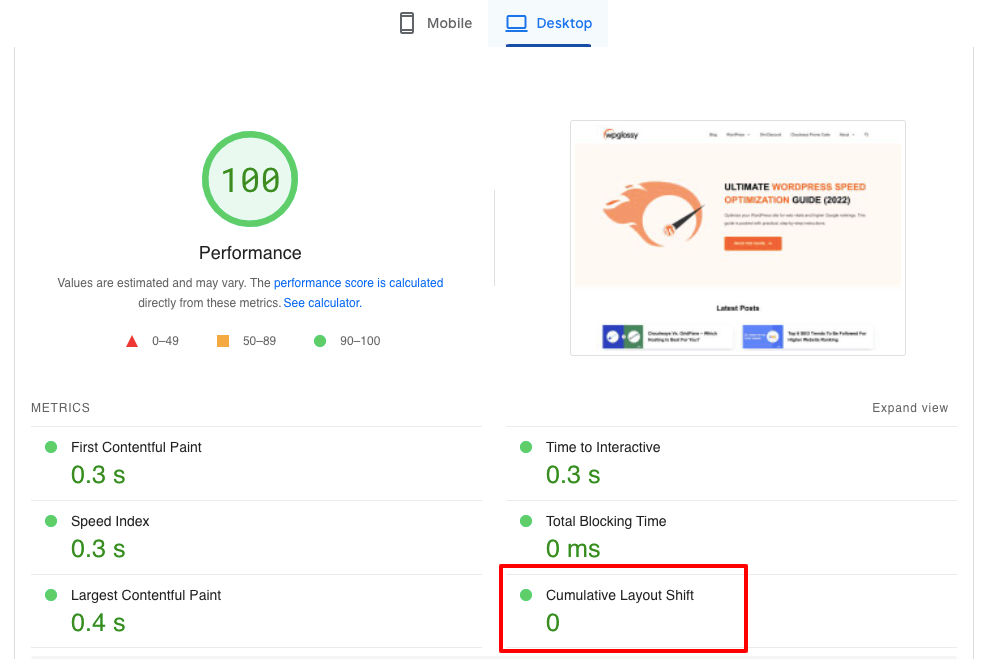
Other Web Vitals Metrics
There are other important web vitals metrics you need to know!
1. FCP – First Contentful Paint
Apart from the above-discussed measurements, you can see one more important metric while checking your site speed on Google page speed insights, and it is nothing but FCP. It is abbreviated as First Contentful Paint which measures the time taken by the page to display something on the white computer screen.
You should understand that this is a Non-Core Web Vitals metric. Google says that 1.8 seconds or less is a good FCP score as it is used to diagnose the LCP issues. Now, you may think about how to get a good FCP score so that your site can pass the CWV assessments.
How To Improve FCP score?
Following are areas you need to focus on in improving the FCP score!
- Focus on reducing your server response time
- Don’t execute page redirections
- Avoid render-blocking resources
- Use an efficient cache plugin to serve static assets
- Preload web fonts for improved loading speed
- Get rid of unused CSS and JavaScript
- Server your site images in next-gen format
- Use a reliable CDN like Cloudflare or BunnyCDN
We have almost followed all the above mention tips to get a decent FCP score! Look at the following picture!
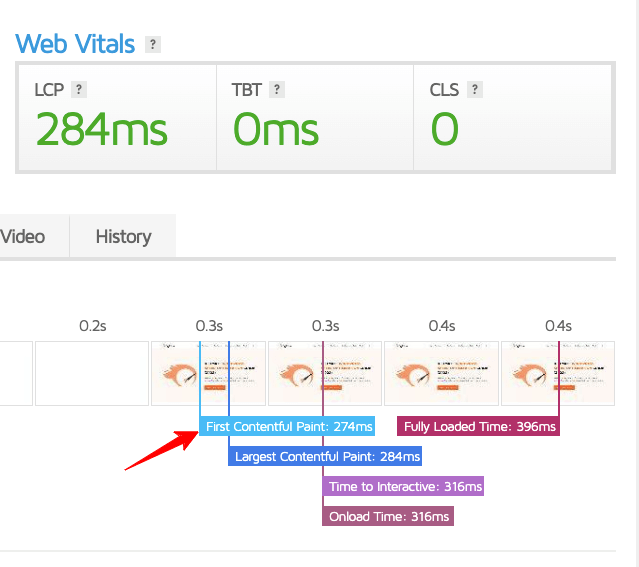
2. TTFB – Time To First Byte
You might have known this primary metric! The expansion of TTFB is “Time To First Byte,” which is an evaluation of your web server’s response to the request. It comes under the other web vitals metric as it is directly related to the page speed load experience and helps to identify the low LCP score issues.
How To Improve TTFB Score?
You should reduce the TTFB score for increased page speed load! Implement the following tips to lower your TTFB metric.
- Use the fastest hosting with premium DNS service (I prefer Cloudways)
- Optimize your Database
- Ensure that you are using the latest PHP version
- Keep your WordPress version, theme, and installed plugins updated.
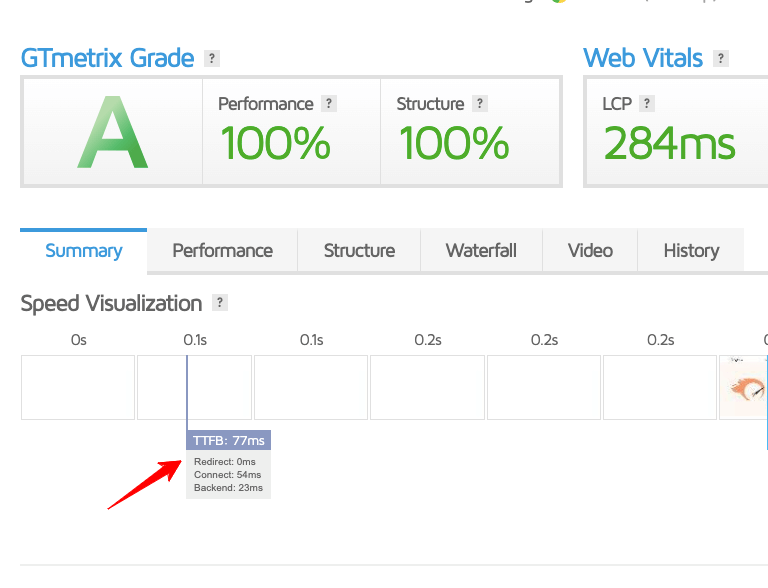
Wrapping Up The Tips To Optimize Your Website For Core Web Vitals
Well! That’s all about how to optimize your site for Core Web Vitals so far. If you are a business working online or a company selling services, you need to optimize them. It will help rank your website, keep your users engaged, and make them your regular visitors.
If you are doing these processes in the first place, try to read about these tools we mentioned for analysis. Some are pretty basic tools like the PageSpeed Insights and Google Search Console. For optimizing a lot of things, you can also use some speed plugins, such as Autoptimize.
Before performing any step for optimizing Core Web Vitals, make sure you are using good hosting because the web host providers like Cloudways offer features that need little to no optimization. You get most things done by default, leaving less work for you.

very amazing and good content Blog…Thanks for sharing this information with us.
Thank you for the insightful blog about Core Web Vitals! Your information has been incredibly helpful in understanding and optimizing for these crucial aspects of website performance. Grateful for the valuable insights you’ve shared.